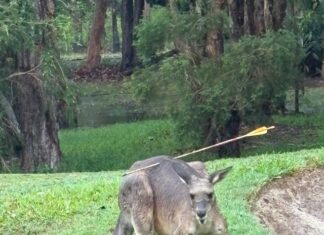For the love of fairness, community, and the residents’ peace, stop inciting river users with assaults on our rights.
These are not just carparks. They are access points to a way of life. To erase them without cause is not planning—it’s provocation.
We are calling for full transparency regarding the removal of carparks near the Noosaville boat ramp under the revised Noosaville Foreshore Infrastructure Plan.
Specifically:
1. Where is the evidence that justifies removing vehicle and trailer-accessible parking in this location to make way for a widened pedestrian walkway?
2. Where is the pedestrian traffic data showing a bottleneck or safety issue in this specific area?
3. Where are the usage stats or community reports demonstrating conflict between current parking use and pedestrian flow?
4. What consultation/evidence-based process confirmed this decision reflects community priorities, particularly those of the boaties and fishers who rely on this access point?
To proceed with changes that disadvantage river users without disclosing the evidence base is not just poor governance – it signals a planning process that is out of touch, and potentially hostile to a vital part of our town’s identity.
This is not progress. It’s a mistake.
Here we are again, voicing a perspective that’s becoming increasingly common in Noosa —where urban design and planning decisions are being made in the boardrooms, with what feels like utter contempt for the communities they are meant to serve.
The removal of car parks at the Noosaville boat ramp is not just poor planning, it is a deliberate dismissal of a key user group: fishermen and boaties. This is significant because these groups aren’t just recreational—they’re part of the cultural and economic lifeblood of towns like Noosaville. It disregards the needs of all fishermen, boaties, and families who depend on river access.
In our coastal town of Noosaville, access to the water is a defining aspect of identity and attempts to limit that access, even under the guise of beautification or pedestrian improvements, can only be seen as prioritising a council-driven self-serving need over locals’ lived reality.
There is a lack of empirical justification, such as pedestrian traffic counts, safety reports, or congestion studies, that would warrant widening a walkway at the expense of essential car and trailer parking at the specific target area of the Noosaville Boat Ramp.
This critique is about accountability: if the council can’t show clear evidence to support the change, it raises the question of whether the project is about function, optics or even revenge?
This is about defending the public’s right to access, to be heard, and to not be pushed aside by planners or policies that disregard long-standing users of the river.
The Noosaville Foreshore Plan emphasises “placemaking” ideals – walkability, open sightlines, cohesive design, our point is:
At what cost to utility and tradition? What good is a wider walkway around or near the boat ramp area?
What good is a foreshore if it no longer serves the people who use it most intimately?







